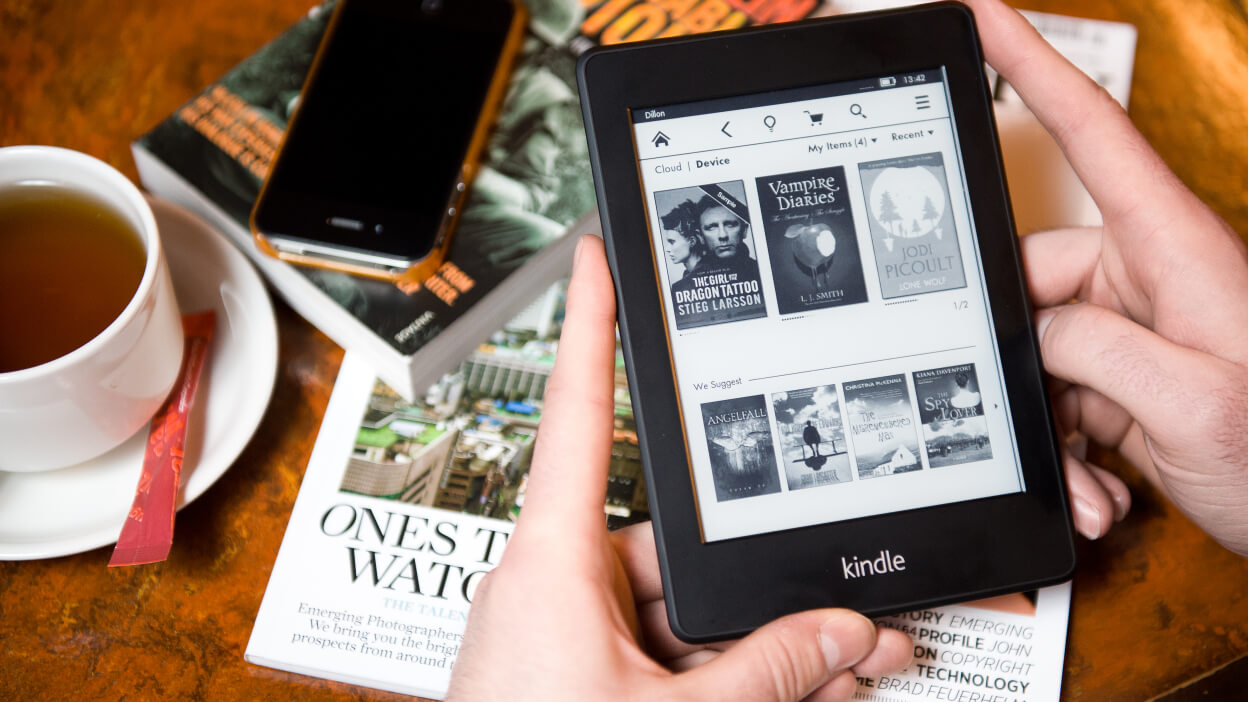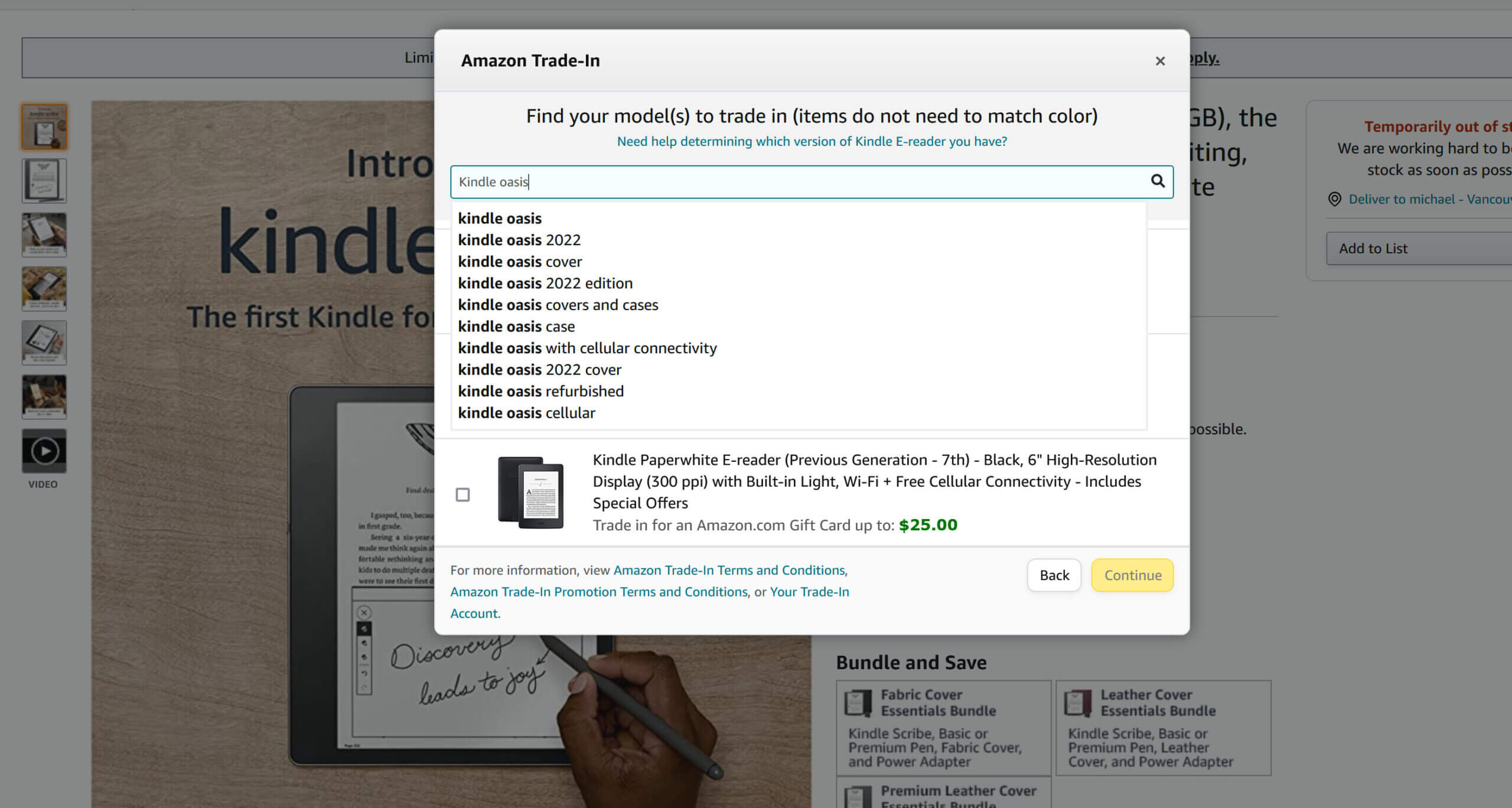Amazon has refreshed their entire Kindle e-Reader lineup and have introduced an entirely new device. The Amazon Kindle Basic 2022 will be shipping out in the middle of October and the 11th generation Kindle Paperwhite and the Signature Edition came out in November, 2021. The Kindle Scribe is their newest device, which is an 10.2-inch e-note and e-Reader. This leaves the Kindle Oasis has the only model, which hasn’t been updated since 2019. Amazon plans on announcing a new Oasis model sometime in the next few weeks. There are various placeholder images, and references to the All-New Oasis 2022 model all over the Amazon website. You can view it when going to the trade-in page for the Kindle Scribe and there are other places.
What new features will the 2022 Kindle Oasis going to have? The are a few reference specs on the website, but they don’t really tell us much. It does state that it will have an USB-C port, instead of Micro-USB found on the 2019 model. However, we can extrapolate a few other details, based on the current generation hardware, which has just been refreshed. The Paperwhite, Signature Edition and the upcoming Scribe all have E INK Carta 1200 e-paper displays. We have only seen e-readers employ this technology in late 2021 and in 2022. The Kobo Sage, Kobo Clara 2e, Pocketbook Era and a few other models use it. Does Carta 1200 really matter? Yes, of course it does. It basically increases page turn speed by 25% and overall performance by 30%. This is why the new 6.8-inch Paperwhite is so damn fast and responsive, even with the new animated page turn engine.
The processor for the upcoming Oasis 2022 edition will likely have the same one that the The Paperwhite and Scribe employ, which is a 1GHz MediaTek MT8113 processor. Given that Amazon has already integrated the processor in existing models and made the Linux software jive with it, it doesn’t make sense to use something else. The Paperwhite and Signature Edition both have 512MB of RAM and the upcoming Scribe will have 1GB of RAM, so the Oasis, since it is a premium e-Reader will likely have 512MB of RAM. The Scribe needs the extra RAM, due to it needing the power for the note taking and PDF editing, which is always hardware dependent. The Oasis battery will be increased from 1130 mAh on the 2019 version to 1,700 mAh. This will make a big difference, the 2019 Oasis, only lasted two weeks before needing a recharge. However, with the bigger battery, you should get a month out of it.
All of the new Kindles have Bluetooth, so the new Oasis will have it too. Amazon is including support for wireless speakers, headphones or earbuds to listen to audiobooks purchased from the Kindle Store. Supported countries, such as the US and Japan have the ability to jump to a different tab on the Kindle Store, it will say audiobooks. You can download samples, buy and listen to them. Sadly, Canada doesn’t have the option to buy audiobooks, event though its a big market for Audible.
Other than the upgraded hardware specs, will anything else be different? I think the screen will be larger. The 2019 Oasis is about the same size the new Paperwhites, so Amazon would have to increase the screen size to make it unique, I believe it will be 8-inches have 300 PPI resolution and continue to use physical page turn buttons.
Amazon will likely announce the new Oasis sometime in November and should be available right away to order. They want to give the Kindle Scribe enough time in the news cycle, before coverage begins to die down. They also don’t want to release it before their two-day Prime Early Access sale on October 11th and 12h. After this two day event, the Kindle Basic 2022 model will start shipping on October 15th and everyone will be reviewing it, so this model will stay in the news cycle until the end of October. Between the end of October and December, announcing the new Oasis will be the best call. If they release it right away, it will stay news worthy until the Scribe comes out in December.
Michael Kozlowski is the editor-in-chief at Good e-Reader and has written about audiobooks and e-readers for the past fifteen years. Newspapers and websites such as the CBC, CNET, Engadget, Huffington Post and the New York Times have picked up his articles. He Lives in Vancouver, British Columbia, Canada.



